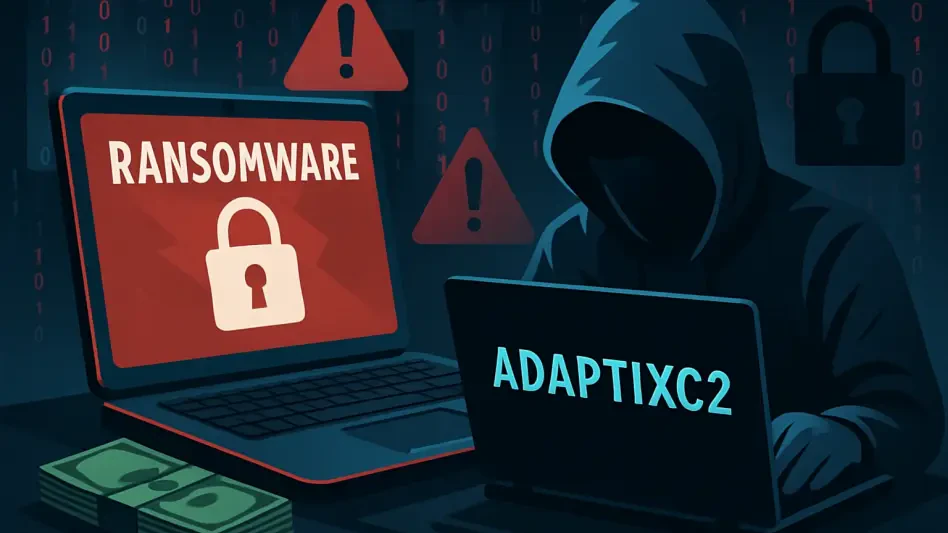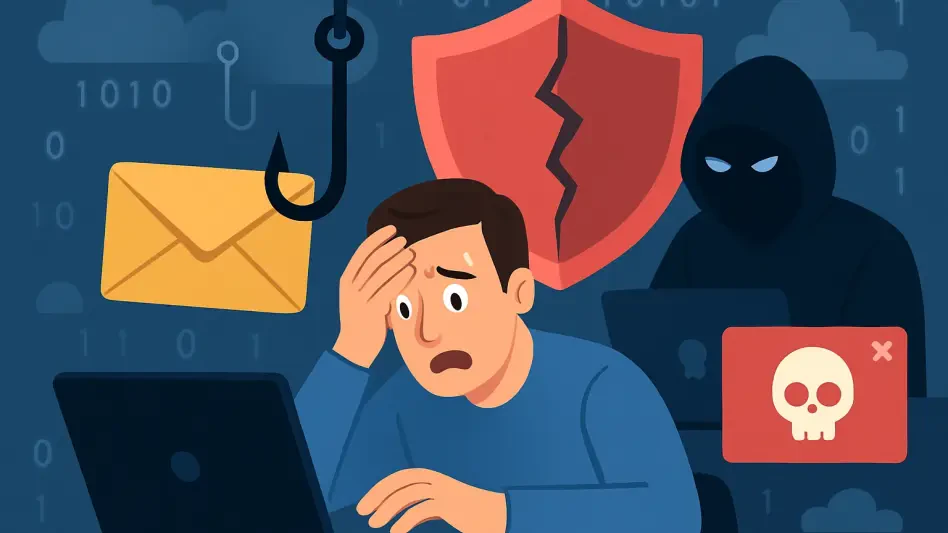The landscape of cybersecurity constantly shifts as phishing attacks, notorious for stealing sensitive information, evolve with newfound ingenuity. Recently, a worrying trend has emerged where attackers use Phishing-as-a-Service (PhaaS) toolkits to craft deceptive fake websites. These kits empower perpetrators to mimic legitimate sites, enabling even those with limited technical know-how to orchestrate sophisticated phishing scams. This method marks a departure from previous techniques, as attackers now deploy dynamically generated pages, streamlining attacks efficiently and with devastating efficacy. This article delves into the mechanisms behind these modern phishing tactics and explores crucial strategies for safeguarding against them.
Evolution of Phishing Techniques
Introduction of Phishing-as-a-Service Toolkits
The introduction of PhaaS toolkits marks a pivotal shift in the realm of phishing attacks, offering streamlined, accessible means for nefarious actors to craft tailored, convincing traps. Instead of painstakingly cloning websites manually, attackers now leverage these automated toolkits to build replicas with alarming realism. This shift has democratized phishing, as even novices with minimal coding skills can create complex scams. By employing APIs such as Clearbit, attackers can dynamically insert branding elements, making the deception more potent and less detectable. Logos and other visual identifiers are seamlessly integrated, allowing phishing pages to appear genuine at first glance.
Through a tactic known as dynamic integration, phishing emails entice victims by exploiting curiosity or urgency, leading them to sites that mimic legitimate companies. Attackers employ AJAX POST requests to stealthily collect entered credentials, ensuring the victims remain oblivious to the breach. This cunning process redirects victims back to the actual site post-compromise, a tactic designed to maintain the illusion of legitimacy. As a result, unsuspecting users labor under the false assumption that they never left the authentic site. The real-time customization of phishing pages introduces a dangerous threat, emphasizing the need for vigilant awareness and innovative defenses against such advanced exploitation.
Global Reach and Continued Spread
Since the rise of PhaaS in recent years, notable examples like LogoKit have demonstrated the global reach of these campaigns. LogoKit, an influential PhaaS-based tool, has enabled widespread dispersion of phishing campaigns across multiple continents. Its ability to dynamically fetch logos in real time has made it attractive to phishers seeking to enhance the believability of their schemes. The scalability and accessibility of such toolkits, found easily on hidden online forums, have lowered barriers for entry, allowing a broader range of attackers to enter the fray. This development further complicates efforts to contain these evolving threats.
Security teams find themselves in a perpetual game of catch-up as they grapple with the lightweight deployment of these campaigns. Utilizing platforms like Firebase and GitHub, attackers craft scalable phishing waves that are difficult to dismantle swiftly. This agility poses a significant challenge for organizations attempting to combat large-scale phishing efforts. As attacks grow more pervasive, the fight against phishing becomes an increasingly high-stakes endeavor requiring continuous innovation and a multi-faceted approach to thwart a wide spectrum of phishing threats effectively.
Defensive Strategies Against Advanced Phishing
Multi-Layered Defense and User Awareness
In the battle against advanced phishing threats, a multi-layered defense strategy stands as a critical line of protection. While technical solutions form a core component, the human element remains equally imperative. Cultivating strong user awareness is essential to prevent potential vulnerabilities within organizations. Educating users on identifying phishing emails and verifying the authenticity of communications can significantly reduce the chances of falling victim to scams. Emphasizing the importance of independently verifying emails and messages that solicit sensitive information is paramount to hindering attackers who seek to exploit human behavior.
Technical controls further strengthen defense. Implementing strong passwords, changing them frequently, and utilizing password management tools help protect against unauthorized access. Two-factor authentication (2FA), preferably through app-based or hardware tokens over SMS codes, adds another layer of security. It acts as a deterrent by requiring an additional verification step, minimizing the likelihood of successful attacks. Advanced security solutions, which feature anti-phishing capabilities, also provide valuable assistance by proactively detecting and blocking phishing attempts before they reach users.
The Role of Advanced Security Solutions
Advanced security solutions offer crucial support by integrating anti-phishing features that safeguard users against increasingly intricate scams. Emerging technologies help identify and mitigate phishing threats by employing machine learning and real-time threat intelligence. These solutions adapt to detect new phishing tactics, analyzing patterns across vast data sets to discern anomalies indicative of fraudulent activity. By automating threat detection, these tools free up security professionals to focus on fine-tuning defenses rather than reacting to each new threat.
The best security solutions proactively scan emails, links, and attachments for indicators of compromise, preventing harmful content from ever reaching inboxes. They collaborate with existing security measures, forming a comprehensive framework to address multifaceted threats. By continuously updating definitions and monitoring the evolving threat landscape, these solutions provide assurance that organizations remain ahead of potential breaches. Innovation within the security sector is accelerating, ensuring that defenses remain robust even as attackers adapt and seek new vulnerabilities to exploit.
Looking to the Future
The cybersecurity landscape continually evolves as phishing attacks grow more sophisticated, wielding the latest tactics to acquire sensitive data. Recently, a troubling trend has developed where attackers utilize Phishing-as-a-Service (PhaaS) toolkits, allowing them to craft highly convincing fake websites. These toolkits empower even those with minimal technical expertise to create elaborate phishing schemes by mimicking legitimate online platforms. This innovative approach marks a significant shift from earlier methods, as the attackers now use dynamically generated web pages. This change has streamlined the attack process, making it both more effective and destructive. The use of PhaaS highlights the increased accessibility scammers have to powerful tools, heightening the risk for unsuspecting targets. This article explores the mechanisms behind these modern phishing strategies, offering insightful analysis on their operation and proposing vital measures to defend against them, aiming to bolster individual and organizational defenses to minimize the impact of these evolving cyber threats.








